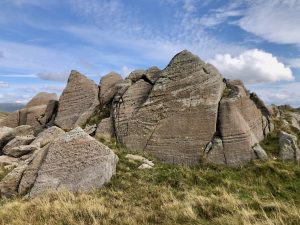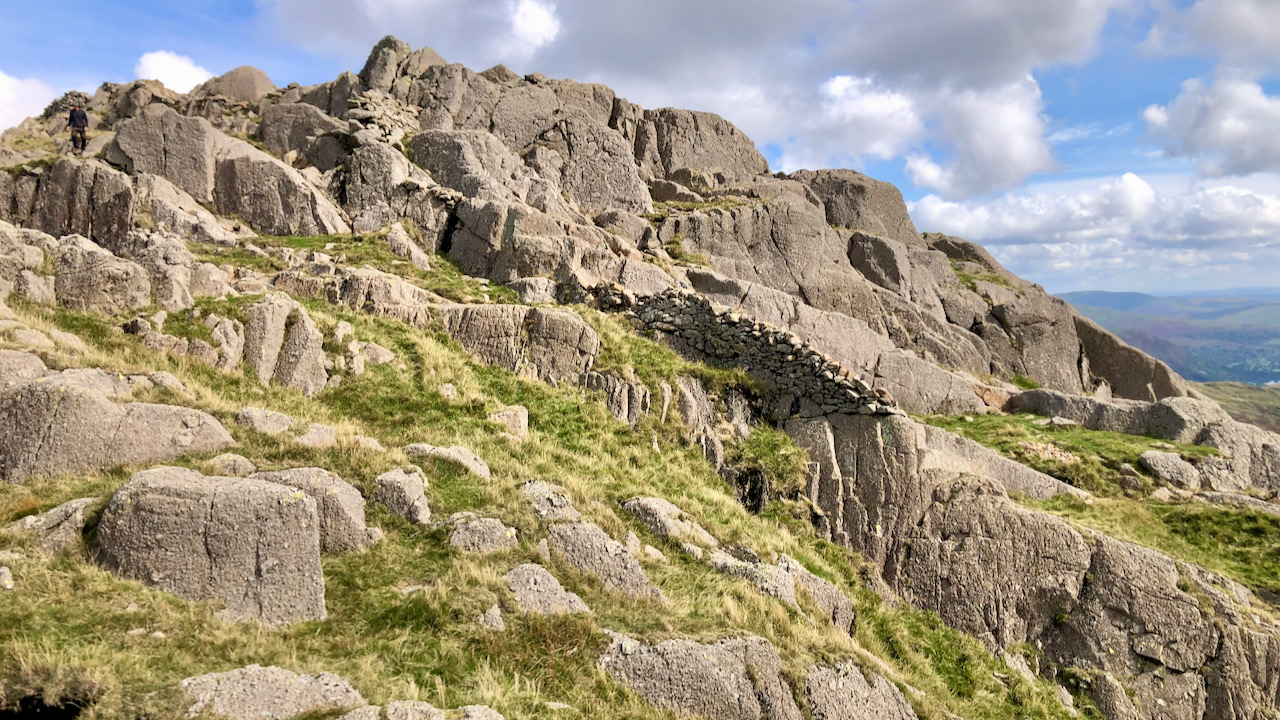On the first night back home in Cleveland, I awoke to a drizzle, low-hanging clouds, and, after a week in the Lakes, a slight feeling of dysphoria. My morning constitutional brought no relief as the weather remained dismal. So, I believe it’s only fair to share a photo taken a few days prior in Langdale in much better weather. After all, there’s so much more I could write about that dale.
The main photo captures the summit of Pavey Ark, but what truly struck me was the dry stone wall that abruptly ended in a spectacular crag.

However, it’s the rocks around here that piqued my curiosity. A closer inspection reveals blocks of various sizes, from small pebbles to fist size boulders deeply embedded in a structure resembling concrete. They’re classified as “volcaniclastic rocks“, comprising “both pyroclastic and reworked volcanic rocks” formed between 458.4 and 449 million years ago, during the Ordovician period1‘BGS Lexicon of Named Rock Units – Result Details’. 2020. Bgs.ac.uk <https://webapps.bgs.ac.uk/lexicon/lexicon.cfm?pub=PAV> [accessed 16 September 2023].
I had been following a route recommended by Bryan Lynas in his book “Lakeland Rocky Rambles,” with a keen eye on the geology of the Langdale Pikes2Lynas, Bryan. “Lakeland Rocky Rambles.” Sigma Leisure. 1994.. It’s a tale of volcanic eruptions spewing thick lava, ignimbrites, and tuffs, followed by subsidence beneath a water level. The book is brimming with fancy terms that I have not fully grasped, though I do understand that a pyroclastic flow is what buried Pompeii.

But even a layman like myself could discern the contrast between the smoother tuffs of Pike of Stickle, Loft Crag, and Harrison Stickle, and the jagged, fragmented pyroclastic rock of Pavey Ark.
About a hundred metres or so north of the Pavey Ark summit, the rock type underwent another transformation, this time into distinct layers of “lapilli tuffs.” The presence of bedding indicates that these rocks were deposited underwater, perhaps in a lake in the caldera of the volcano.
I can still vividly recall attempting to navigate this fell in dense mist, relying on a map and compass. It occurred to me that my newfound knowledge of geology would have proven invaluable back then.
- 1‘BGS Lexicon of Named Rock Units – Result Details’. 2020. Bgs.ac.uk <https://webapps.bgs.ac.uk/lexicon/lexicon.cfm?pub=PAV> [accessed 16 September 2023]
- 2Lynas, Bryan. “Lakeland Rocky Rambles.” Sigma Leisure. 1994.

Leave a Reply